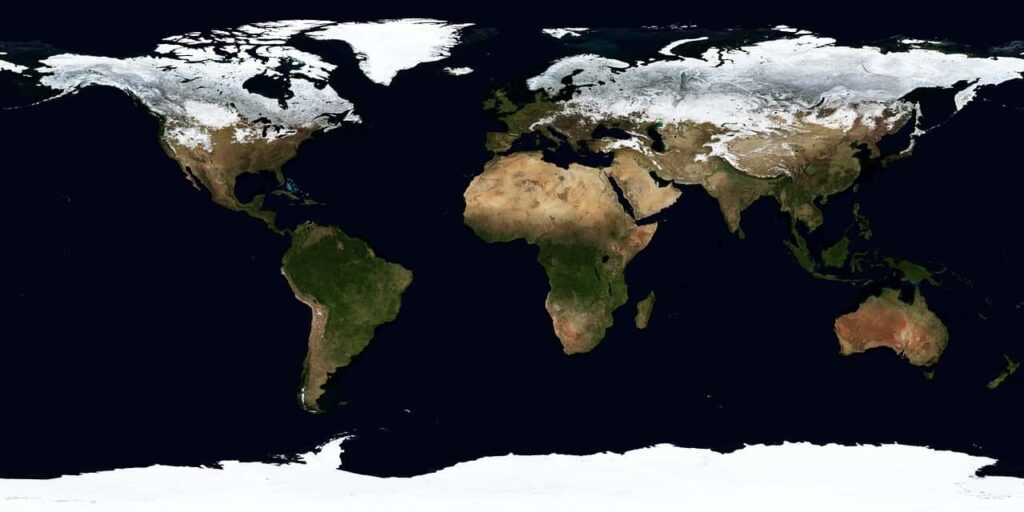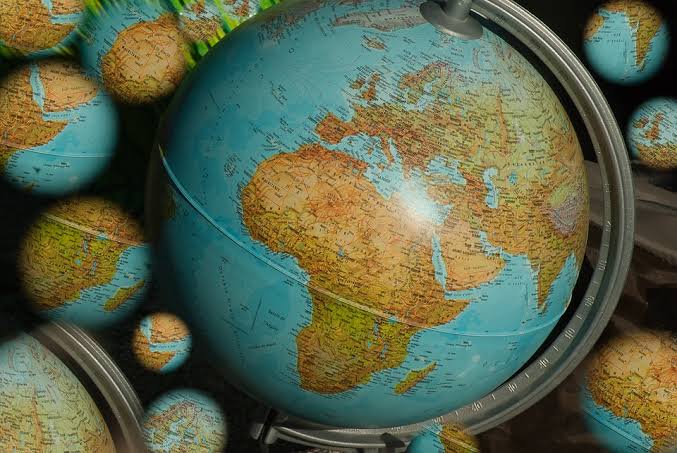Geography, as a discipline, encompasses the study of the Earth’s physical features, climates, and human societies. At its core, geography explores the intricate relationships between various elements of our environment and their spatial patterns. One crucial aspect of this field is understanding spatial relationships. Spatial relationships refer to the connections, associations, and interactions between objects or phenomena in space. By comprehending these relationships, geographers gain valuable insights into how different elements of the Earth’s surface influence each other. This article aims to delve into the concept of spatial relationships in geography, explore its significance, and highlight key examples of its application.
Table of contents
Introduction
Definition of Relationships
Spatial relationships, in the context of geography, pertain to the connections and interactions between objects, phenomena, or locations in space. These relationships are fundamental to understanding how the Earth’s surface is organized and how different elements influence each other. Spatial relationships can be both tangible, such as the distance between two cities, and intangible, such as the cultural diffusion of ideas across regions.
Importance of Spatial Relationships in Geography
Spatial relationships are essential for geographers as they provide a framework for analyzing and interpreting various geographic patterns and processes. By studying spatial relationships, geographers can identify the underlying mechanisms that shape the distribution and arrangement of natural and human phenomena. This understanding contributes to effective decision-making in areas such as urban planning, resource management, and disaster response.
Types of Spatial Relationships
Distance and Proximity
Distance refers to the physical space between two or more objects or locations, while proximity refers to their relative closeness. Geographers analyze distance and proximity to understand accessibility, connectivity, and the diffusion of phenomena. Measures such as Euclidean distance, network distance, and travel time are utilized to quantify spatial relationships based on distance.
Contiguity and Adjacency
Contiguity refers to the state of being in direct contact or sharing a common boundary. Geographers examine contiguity to identify spatial patterns, boundaries between regions, and spatial dependencies. The concept of adjacency is particularly relevant in political geography, where it influences territorial divisions and administrative boundaries.
Interaction and Interconnectedness
Interaction focuses on the relationships and exchanges between objects or locations. Geographers study the spatial interactions of phenomena such as trade flows, migration patterns, and communication networks. Understanding these interactions helps identify centers of activity, analyze economic and social relationships, and predict future trends.
Accessibility and Connectivity
Accessibility relates to the ease of reaching a location from other places. It considers factors such as transportation networks, infrastructure, and topography. Geographers analyze accessibility to understand patterns of human movement, land use, and economic development. Connectivity refers to the degree of linkage between locations, often facilitated by transportation and communication networks. It influences the flow of goods, information, and social interactions.
Distribution and Concentration
Distribution refers to the arrangement of objects or phenomena across space. Geographers examine distribution patterns to identify clusters, outliers, and gradients. Concentration, on the other hand, refers to the extent to which objects or phenomena are clustered or dispersed within a given area. These concepts help in understanding the spatial organization of natural and human features.
Diffusion and Dispersal
Diffusion refers to the spread of a phenomenon or idea across space over time. Geographers analyze different types of diffusion, such as contagious, hierarchical, and relocation diffusion, to study cultural, technological, and environmental changes. Dispersal, in contrast, refers to the movement of organisms or substances from a source to new locations. It plays a crucial role in ecology, biogeography, and the study of invasive species.
Tools and Techniques for Analyzing Spatial Relationships
Geographic Information Systems (GIS)
GIS technology enables geographers to capture, store, analyze, and visualize spatial data. By integrating various layers of information, GIS allows for the exploration of spatial relationships and the creation of informative maps. Geographers can perform spatial queries, overlay different datasets, and conduct spatial analysis to gain insights into spatial patterns and relationships.
Remote Sensing
Remote sensing involves the acquisition of information about the Earth’s surface from airborne or satellite sensors. It provides valuable data for analyzing spatial relationships by capturing detailed imagery, monitoring land cover changes, and detecting environmental factors. Remote sensing is especially useful in studying phenomena that cover large areas or are inaccessible on the ground.
Global Positioning System (GPS)
GPS utilizes a network of satellites to determine precise locations on the Earth’s surface. Geographers use GPS for accurate positioning, navigation, and tracking. It aids in collecting field data, mapping spatial features, and understanding movement patterns and routes.
Spatial Analysis Techniques
Spatial analysis involves a range of methods to explore and analyze spatial relationships. Techniques such as spatial clustering, interpolation, spatial autocorrelation, and network analysis help geographers identify patterns, hotspots, and spatial dependencies. These methods enable the quantification and visualization of spatial relationships, supporting informed decision-making.
Application of Spatial Relationships in Geography
Urban Planning and Development
Spatial relationships are crucial in urban planning to understand the layout of cities, land use patterns, and transportation networks. By analyzing spatial relationships, geographers and urban planners can optimize infrastructure, improve accessibility, and promote sustainable development.
Transportation and Infrastructure
Spatial relationships play a vital role in transportation planning and infrastructure development. Geographers assess connectivity, accessibility, and spatial interactions to design efficient transportation networks, reduce congestion, and enhance mobility.
Environmental Studies and Conservation
Spatial relationships aid in understanding the distribution of natural resources, ecosystems, and biodiversity. Geographers analyze spatial patterns to identify critical habitats, prioritize conservation efforts, and assess the impacts of human activities on the environment.
Population Distribution and Migration
Spatial relationships help geographers study population distribution and migration patterns. By examining factors such as proximity to resources, employment opportunities, and social networks, geographers gain insights into population movements, urbanization processes, and demographic trends.
Disease Spread and Epidemiology
Spatial relationships are instrumental in studying the spread of diseases and analyzing epidemiological patterns. Geographers use spatial analysis techniques to map disease incidence, identify high-risk areas, and understand the underlying factors contributing to disease transmission.
Natural Hazards and Disaster Management
Spatial relationships assist in assessing vulnerability and mitigating risks associated with natural hazards. Geographers analyze the spatial distribution of hazards, population exposure, and infrastructure vulnerability to develop effective disaster management strategies.
Challenges and Limitations of Spatial Relationships
Scale and Resolution
Spatial relationships can vary at different scales, and the level of detail, or resolution, affects the accuracy of analysis. Geographers must consider the appropriate scale and resolution for their research, as certain phenomena may exhibit different spatial patterns at various levels.
Data Availability and Quality
Spatial analysis relies on the availability and quality of spatial data. Geographers may face challenges in accessing reliable and up-to-date data, especially for regions with limited data collection efforts or political barriers. Data accuracy and consistency also impact the reliability of spatial relationship analysis.
Interpretation and Subjectivity
Interpreting spatial relationships requires careful consideration of context and subjectivity. Geographers must be aware of potential biases and assumptions in their analysis, as different interpretations may lead to different conclusions.

Future Directions and Emerging Trends
Big Data and Artificial Intelligence
The proliferation of big data and advances in artificial intelligence offer new opportunities for analyzing spatial relationships. Integration of diverse datasets and machine learning algorithms can provide more nuanced insights into complex spatial patterns.
Spatial Modeling and Simulation
Spatial modeling and simulation techniques enable geographers to simulate and predict spatial relationships in dynamic systems. By incorporating spatially explicit models, geographers can forecast changes and evaluate potential scenarios.
Geovisualization and Virtual Reality
Geovisualization techniques, such as interactive maps and virtual reality, enhance the communication and understanding of spatial relationships. These tools facilitate immersive experiences and enable stakeholders to visualize complex spatial patterns more effectively.
Conclusion
Understanding spatial relationships is a fundamental aspect of geography, enabling geographers to analyze and interpret the world around us. Through the exploration of distance, contiguity, interaction, distribution, and other spatial relationships, geographers gain valuable insights into the patterns, processes, and connections that shape our planet. By utilizing tools such as GIS, remote sensing, GPS, and spatial analysis techniques, geographers continue to uncover new knowledge and contribute to diverse fields, ranging from urban planning to environmental conservation. As technology advances and new trends emerge, the study of spatial relationships in geography will remain essential in tackling complex challenges and creating sustainable solutions for our ever-changing world.
Bibliography
- Longley, P. A., Goodchild, M. F., Maguire, D. J., & Rhind, D. W. (2015). Geographic Information Science and Systems. John Wiley & Sons.
- de Smith, M. J., Goodchild, M. F., & Longley, P. A. (2018). Geospatial Analysis: A Comprehensive Guide. Troubador Publishing Ltd.
- Fotheringham, A. S., Brunsdon, C., & Charlton, M. (2003). Quantitative Geography: Perspectives on Spatial Data Analysis. Sage Publications.
- Kwan, M. P., & Zhu, H. (Eds.). (2013). Urban Remote Sensing: Monitoring, Synthesis and Modeling in the Urban Environment. John Wiley & Sons.
- Cressie, N. A. (1993). Statistics for Spatial Data (Revised edition). John Wiley & Sons.
- Openshaw, S., & Abrahart, R. J. (2000). Geographical Information Systems: Principles, Techniques, Management, and Applications. John Wiley & Sons.



 For all latest articles, follow on Google News
For all latest articles, follow on Google News